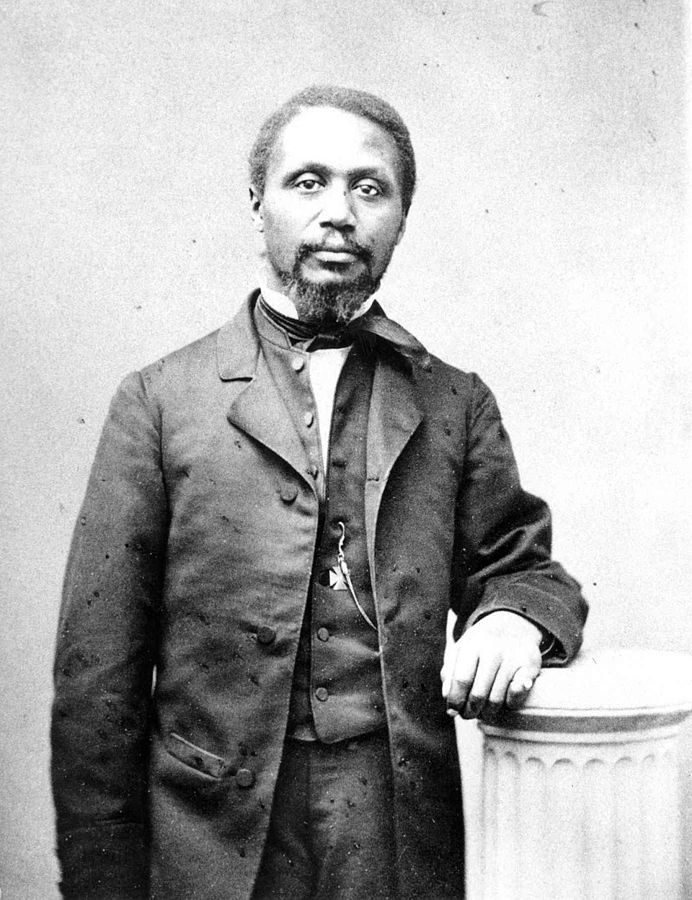Summary | Excerpt | Reviews | Beyond the Book | Read-Alikes | Genres & Themes | Author Bio

Charles Sumner and the Fight for a More Perfect Union
by Stephen PuleoThis article relates to The Great Abolitionist
 At the age of four, when Sarah Roberts was ready for school, her father Benjamin was insistent that she have the best education. It was the late 1840s in Boston. Benjamin Roberts had been traumatized by educational segregation. It incubated shame within him as a young black boy to attend inferior schools with inadequate resources. He didn't want that for Sarah.
At the age of four, when Sarah Roberts was ready for school, her father Benjamin was insistent that she have the best education. It was the late 1840s in Boston. Benjamin Roberts had been traumatized by educational segregation. It incubated shame within him as a young black boy to attend inferior schools with inadequate resources. He didn't want that for Sarah.
The first school that Roberts approached was the Phillips School. It was close to their Andover Street home. But Sarah was instantly denied because she didn't have a ticket of entrance. Tickets of entrance were only given to white students. Roberts was only allowed to enroll Sarah in the Smith School for colored children, which was in a black neighborhood. Black parents who felt similarly to Roberts had recently boycotted the Smith School and it had suffered a 40% drop in attendance.
Historian Stephen Puleo writes in The Great Abolitionist: Charles Sumner and the Fight for a More Perfect Union: "To get to the Smith School, Sarah had to pass by five elementary schools, including Phillips, that allowed only white students to enroll."
After he was denied at the Phillips School, Roberts approached the Otis School. It was all-white but for some unexplained reason allowed Sarah admission. However, the School Committee eventually discovered her presence, and a police officer was called. He removed a crying Sarah from class with force.
Benjamin Roberts retained Robert Morris as his attorney to challenge the School Committee. Morris was the grandson of a slave, only one of two black lawyers to have passed the bar at the time, and the first black lawyer to argue and win a case. In Boston, Morris was a celebrity, particularly within the city's black community.
After Morris lost the case at the county level, he asked 38-year-old anti-slavery crusader and lawyer Charles Sumner to be his co-counsel. They were the first interracial legal team to appear in court in U.S. history. Puleo writes, "When Sumner studied the facts of the case and envisioned its long term ramifications, he agreed to work with Morris without payment. At last—a legal case that could fulfill his desire to fight for equal rights."
The case was heard by the Massachusetts Supreme Judicial Court. Sumner argued that sending black students to segregated schools established a caste system which violated the state and U.S. constitutions. He spoke about U.S. law and how it adamantly rejects nobility, putting it into direct conflict with Boston public schools, which were honoring nobility of the skin. He compared school segregation to slavery.
Sumner warned that segregation ruins the "intimate communion" between races, and it is this communion that creates trust and allows friendships. In the absence of such intimacy, injuries occur.
"Slavery in one of its enormities is now before you for judgment," he said. While waiting for a decision that took months, Sumner sent his argument to his brother with a note that he could have done better. Most disagreed. The full text was on the front page of a Boston newspaper.
However, the court ruled the school committee had the authority to make provisions for colored children. Since Sarah Roberts had not been excluded from public instruction she could not sue for damages.
With this decision, Chief Justice Lemuel Shaw was the first to put into a legal judgment the doctrine of "separate but equal." Judges interested in segregation as law followed Shaw's lead and offered the justification in their decisions even after the 14th Amendment was passed, guaranteeing equal protection of the law.
After the ruling, Sumner said, "I lament this very much. Is everything going against us?"
Five years later, in 1855, the Massachusetts legislature was the first state to outlaw school segregation, 99 years before the Supreme Court ruled in Brown v. Board of Education that separating children in public schools based on racial group status was unconstitutional.
Attorney Robert Morris, via Wikimedia Commons
Filed under People, Eras & Events
![]() This article relates to The Great Abolitionist.
It first ran in the June 19, 2024
issue of BookBrowse Recommends.
This article relates to The Great Abolitionist.
It first ran in the June 19, 2024
issue of BookBrowse Recommends.
Your guide toexceptional books
BookBrowse seeks out and recommends the best in contemporary fiction and nonfiction—books that not only engage and entertain but also deepen our understanding of ourselves and the world around us.